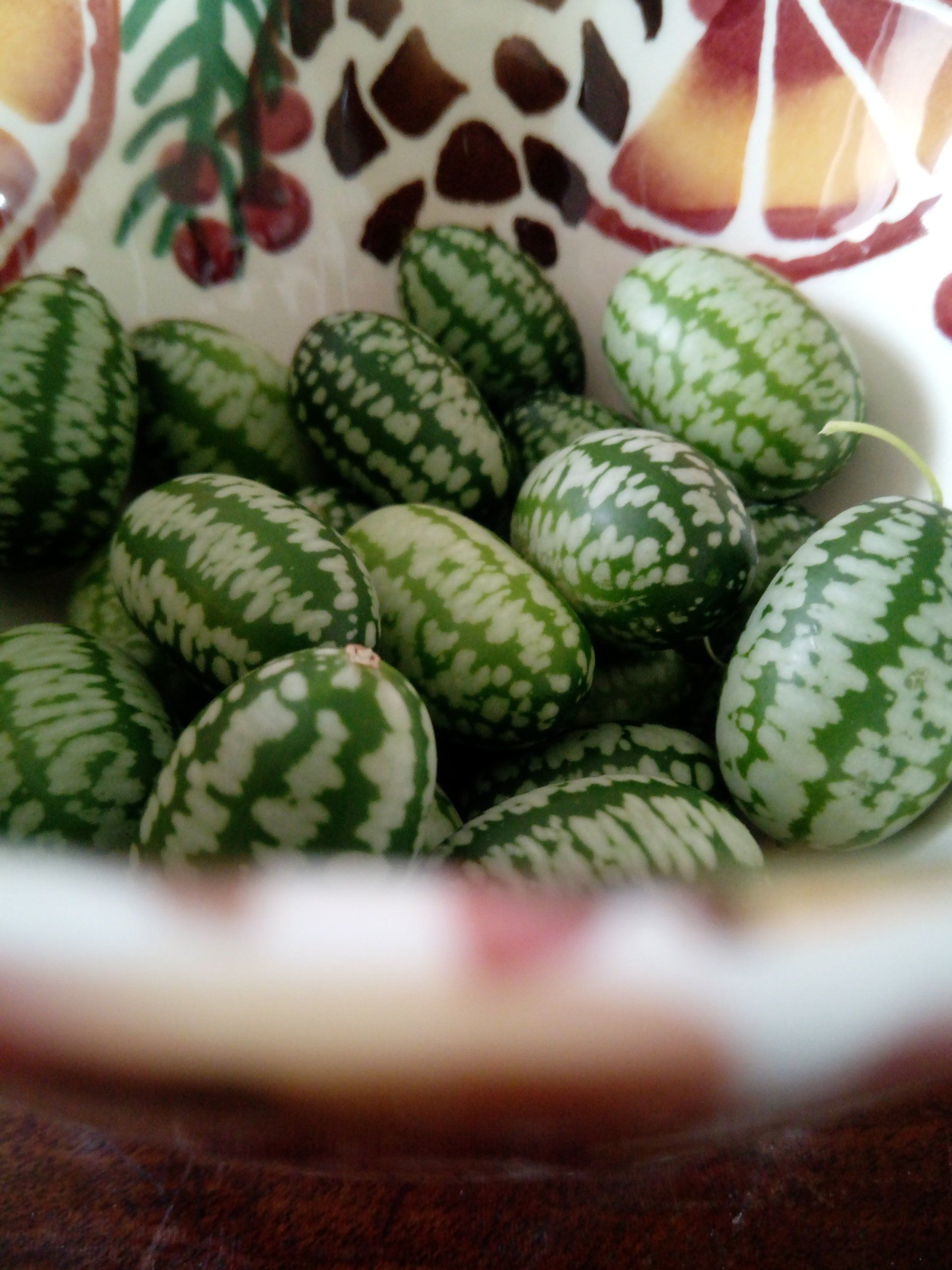How to Grow Cucamelons (Mouse Melons)!
About an inch long these amazing vegetables look like a miniature melon and taste like a cucumber with an added hint of lime. The name Cucamelon is certainly an apt one to describe this unusual vegetable. They are very easy to grow and extremely prolific, you will get hundreds of miniature Cucamelons off each plant from July to September to grace your salads or add to your favourite tipple (an ice and a slice of Cucamelon anyone?).
Step 1
Sow Cucamelon seed in April or May in a multi-purpose or seed and cutting compost into seed trays or pots. They are not hardy, so you will need to keep them in the greenhouse or on a windowsill until the danger of frost has past. When large enough to handle pot individually into 9cm pots to grow on.
Cucamelons prefer to grow in full sun.
Step 3
Cucamelons are climbers so add bamboo canes for support. They grow quite tall (think runner beans for a good comparison) and will easily reach 8 foot tall and will probably get a great deal higher if allowed too. Pinch out the tops when they reach the top of your canes. Water regularly and feed with a high potash fertiliser - a tomato fertiliser would be ideal for this.
Step 4
In 9-12 weeks from sowing you will be harvesting your own Cucamelons. They are ready to harvest when they are about an inch long. You can be harvesting Cucamelons from July to September.
Cucamelons are actually perennial, so will live year after year, although they not hardy in the UK so can't stay outside in winter. They have a radish like root which can be dug up in late autumn and stored in damp compost in your shed over winter. In April plant the roots into pots of fresh multi-purpose for a head start and early crops.





